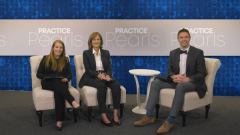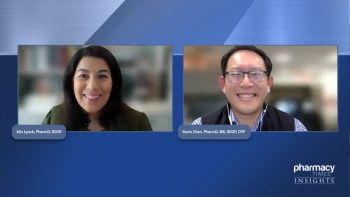
Toxicity Management in Breast Cancer Treatment
Drs McHayleh and Vinokurov discuss toxicity management associated with breast cancer treatments.
Episodes in this series

Wassim McHayleh, MD, MBA, FACP: The most common adverse reaction to alpelisib is hyperglycemia. It’s challenging. It’s very commonly seen in addition to GI [gastrointestinal] toxicities and other toxicities, but this is the biggest challenge. When we start patients on alpelisib, we rely on our clinical pharmacists to follow up on the patients. [Alisa will] tell you how the follow-up is established for those patients. We also rely on primary care physicians and sometimes endocrinology for better diabetes control. Alisa, what are your thoughts?
Alisa Vinokurov, PharmD: When we do the patient education, we tell them everything. We tell them the big things and the small things. We encompass everything that potentially could happen. But as Dr McHayleh said, the big things are the hyperglycemia and GI distress, that potential diarrhea. Keeping it simple, in terms of diarrhea, we give them a shopping list of OTC [over-the-counter] medications they can get to prevent [diarrhea]. It’s better to have it and not need it vs need it and not have it. That’s the easy thing. We say, “Go get your OTC medications,” and that’s that.
Hyperglycemia is a little more difficult because patients could be seeing 10 other doctors and could be started on other medications that could also increase hyperglycemia. [You have to look for a] trend and follow up. You trend the values and see whether it’s jumping up a day or two after they take their prescription. It’s a bit difficult because we don’t follow them every day when they take their medication. We tend to look at the trends in the laboratory results when they follow up, and we depend on family medicine to take care of those primary things. But an unmet need would be for the pharmacist in the clinics to be the support for any medications or any initiation of therapy that may need to be added to control the hyperglycemia if it gets that bad.
Wassim McHayleh, MD, MBA, FACP: To add to that, then we’re able to grade the level of the toxicity and adjust by holding, dose reducing, or discontinuing the treatment based on the severity of the toxicity.
We’re going to discuss therapies other than alpelisib that target the PIK3CA pathway. It’s challenging. It’s the only approved drug available that targets PIK3CA, but it comes with toxicity. When we look at the potential treatments and drugs in development, there are other PIK3CA inhibitors that target this particular pathway. In addition, we know that the AKT/PIK3CA pathways are very close. We saw the data for fulvestrant in combination with capivasertib. These data were presented at ASCO [American Society of Clinical Oncology annual meeting] and were very promising. It had its own flaws, but it provides other treatment options or hopes in targeting this particular pathway, among others.
Transcript edited for clarity.
Newsletter
Stay informed on drug updates, treatment guidelines, and pharmacy practice trends—subscribe to Pharmacy Times for weekly clinical insights.













































































































































































































